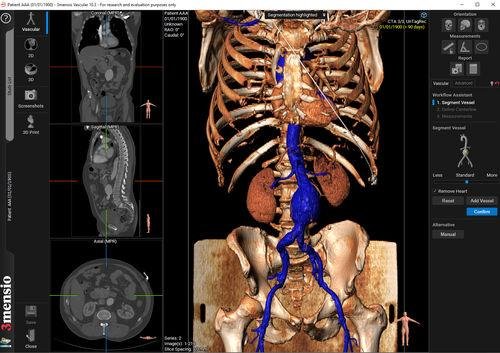Medical diagnosis has entered a new age where technology and human expertise work hand in hand.
When you visit a hospital today, the medical imaging software that processes your X-rays, MRIs, or CT scans is likely powered by artificial intelligence.
This technology is transforming how doctors detect and diagnose conditions, often finding what human eyes might miss.
How AI Enhances Your Diagnostic Experience?
AI doesn’t replace doctors—it makes them better. Think of it as giving your radiologist a super-powered assistant that never gets tired and can spot patterns too subtle for humans to notice.
When you undergo an imaging procedure, AI helps in several key ways:
- Faster results mean you get answers sooner
- Higher accuracy gives you more reliable diagnoses
- Earlier detection of problems means better treatment outcomes
The Numbers Don’t Lie: AI’s Impact on Diagnostic Accuracy
Research consistently shows that AI integration improves diagnostic precision.
A 2023 study published in The Lancet Digital Health found that AI-assisted diagnosis increased accuracy by up to 32% for certain types of cancer detection.
| Condition Type | Traditional Accuracy | AI-Enhanced Accuracy | Improvement |
| Lung Nodules | 67% | 91% | +24% |
| Brain Tumors | 73% | 89% | +16% |
| Breast Cancer | 78% | 94% | +16% |
Source: The Lancet Digital Health, 2023
How This Technology Works For You?
Modern AI systems in medical imaging use deep learning—a form of machine learning where computers learn from thousands of example images.
The more images they analyze, the better they get at identifying abnormalities.
When you have a scan, the AI can:
- Compare your images to millions of others
- Highlight potential areas of concern
- Calculate risk scores based on image features
- Suggest the most likely diagnoses for your doctor to consider

Challenges Being Overcome
Despite its promising benefits, AI integration faces hurdles. Data privacy remains a top concern—after all, these systems analyze your most sensitive health information.
Fortunately, modern encryption and anonymization techniques are helping protect your data while still allowing the technology to advance.
Another challenge is ensuring AI works equally well for everyone. Early systems sometimes performed differently based on factors like skin tone or body type.
Today’s developers are working to eliminate these biases by using diverse training data.
What This Means For Your Future Healthcare?
As AI technology continues to evolve, you can expect even more remarkable improvements in diagnostic imaging. The future will likely bring:
- Personalized screening schedules based on your specific risk factors
- Integrated diagnostics that combine imaging with genetic and laboratory data
- Remote diagnosis options that bring expert-level care to underserved areas
The Human-AI Partnership
Perhaps most importantly, successful AI integration depends on a balanced partnership between technology and healthcare professionals.
The best outcomes happen when AI handles the computationally heavy lifting while doctors apply their clinical judgment and human touch.
The goal isn’t to replace the radiologist who reviews your scans—it’s to give them better tools to help you stay healthy.
As medical imaging software continues to evolve with AI capabilities, you’ll benefit from faster, more accurate diagnoses that can quite literally save your life.
The revolution in diagnostic imaging isn’t just a technological achievement—it’s a transformation in how healthcare serves you, the patient.






